Abstract
The uptake of D-glucose by Acholeplasma laidlawii B occurs via a mediated transport process, as shown by the following observations: (i) glucose permeates A. laidlawii B cells at a rate at least 100 times greater than would be expected if its entry occurred only by simple passive diffusion; (ii) the apparent activation energy for glucose uptake in A. laidlawii is significantly lower than that expected and observed for the passive permeation of this sugar; (iii) glucose uptake appears to be a saturable process; (iv) glucose uptake can be completely inhibited by low concentrations of phloretin and phlorizin; and (v) glucose uptake is markedly inhibited at temperatures above 45 C, whereas the passive entry of erythritol continues to increase logarithmically until at least 60 C. The metabolism of D-glucose by this organism is rapid and, at low glucose concentrations, the intracellular radioactivity derived from D-[14-C]glucose is at any given time a reflection of the net effect of glucose transport, glucose metabolism, and loss from the cell of radioactive metabolic products. Care must thus be taken when attempting to determine the rate of glucose transport by measuring the accumulation by the cells of the total radioactivity derived from D-[14-C]glucose. The rate of uptake of D-glucose by A. laidlawii B cells is markedly dependent on the fatty acid composition and cholesterol content of the plasma membrane and exhibits a direct dependence on the fluidity of the membrane lipids as measured by their reversible, thermotropic gel to liquie-crystalline phase transition temperatures. In contrast to the transport rates, the apparent activation energy for glucose uptake above the phase transition temperature is not dependent on membrane lipid composition. At the temperature range within the membrane lipid phase transition region, the apparent activation energy of glucose uptake is different from the activation energy observed at temperatures above the phase transition. This may reflect the superimposed operation within the phase transition region of more than one temperature-dependent process.
Full text
PDF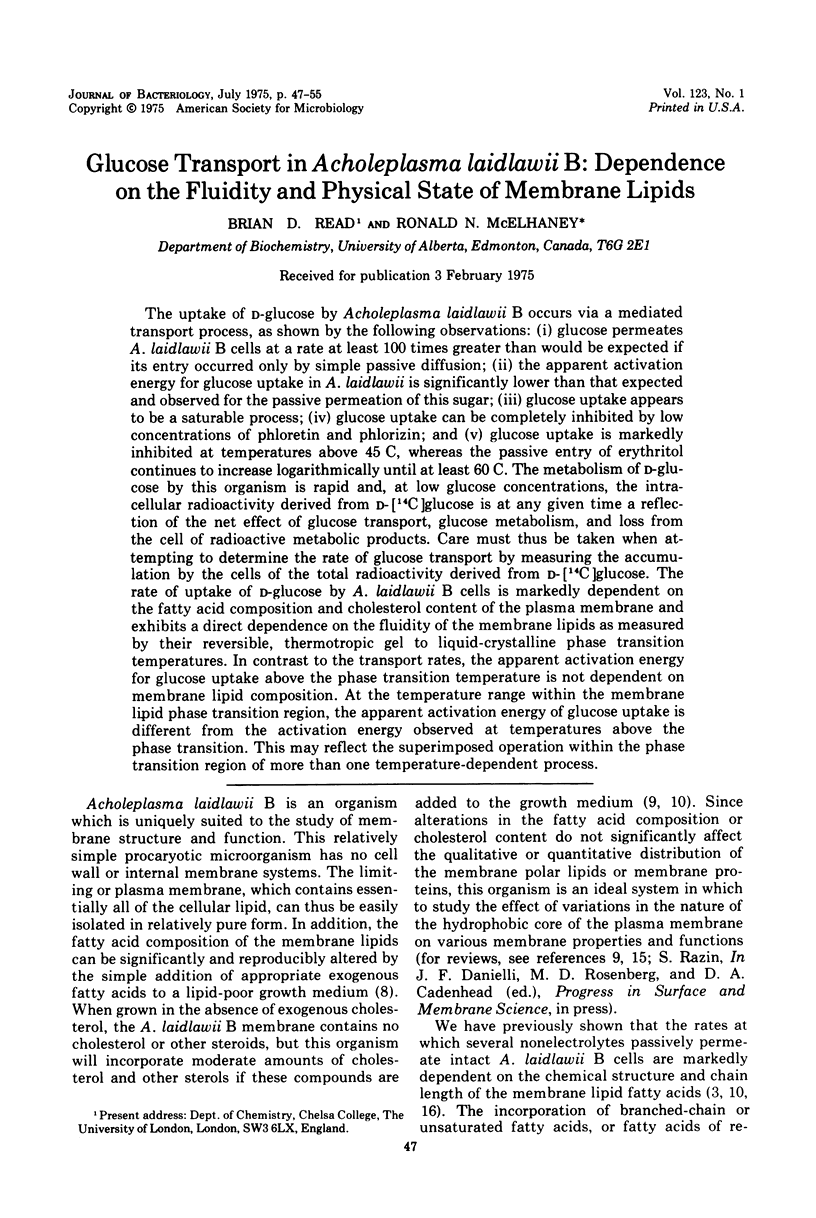
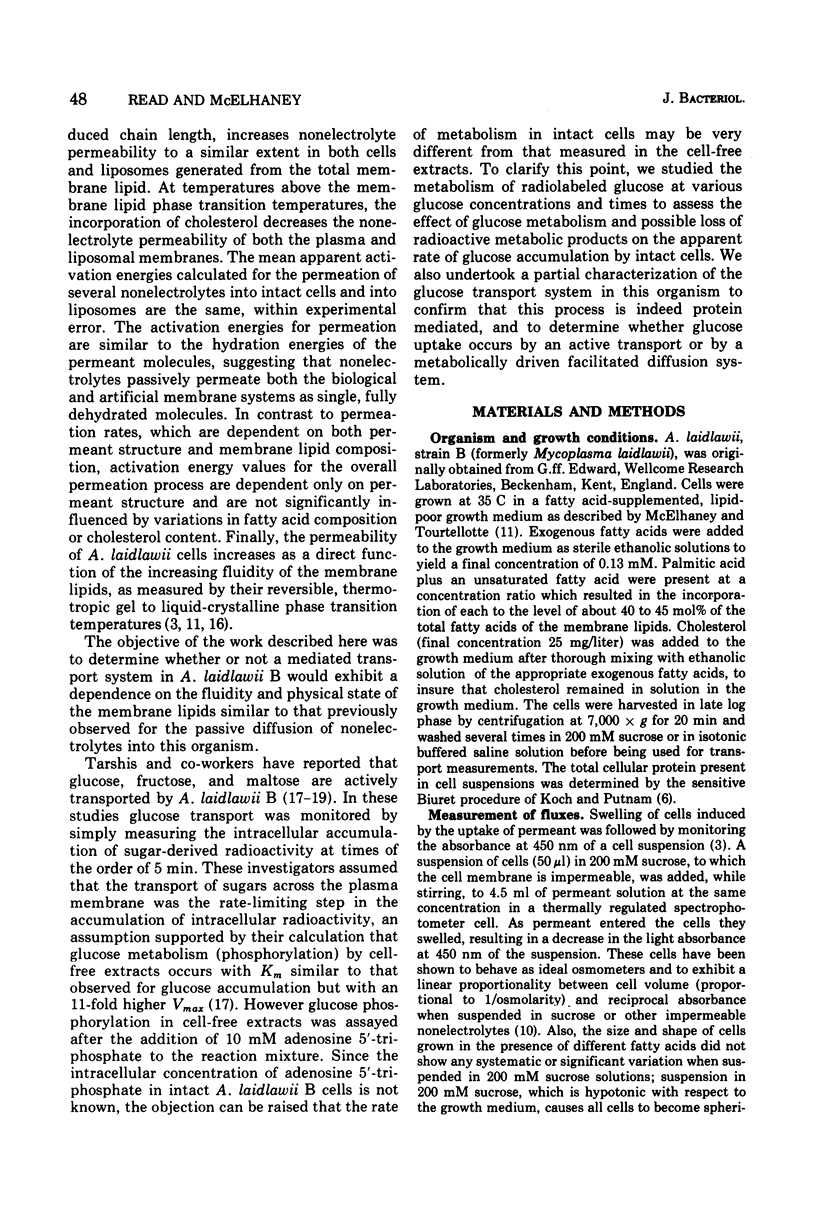
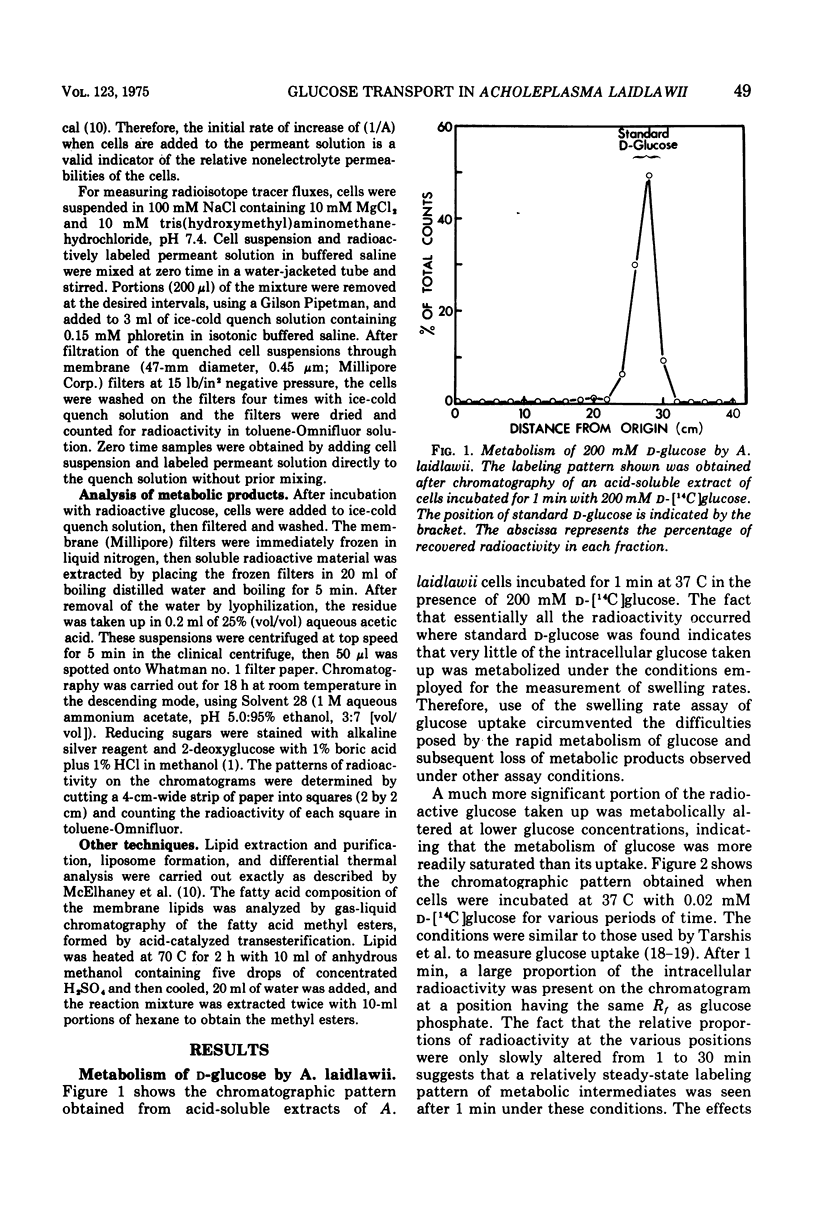
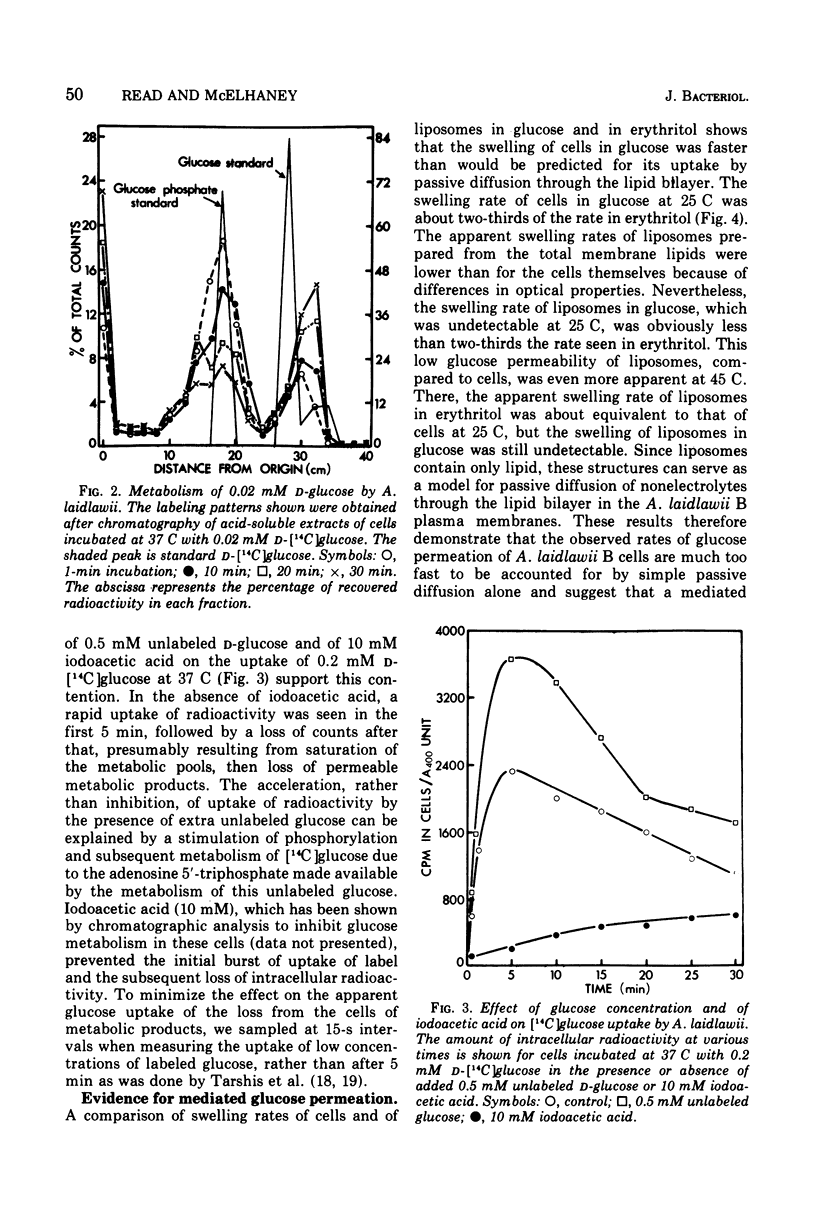
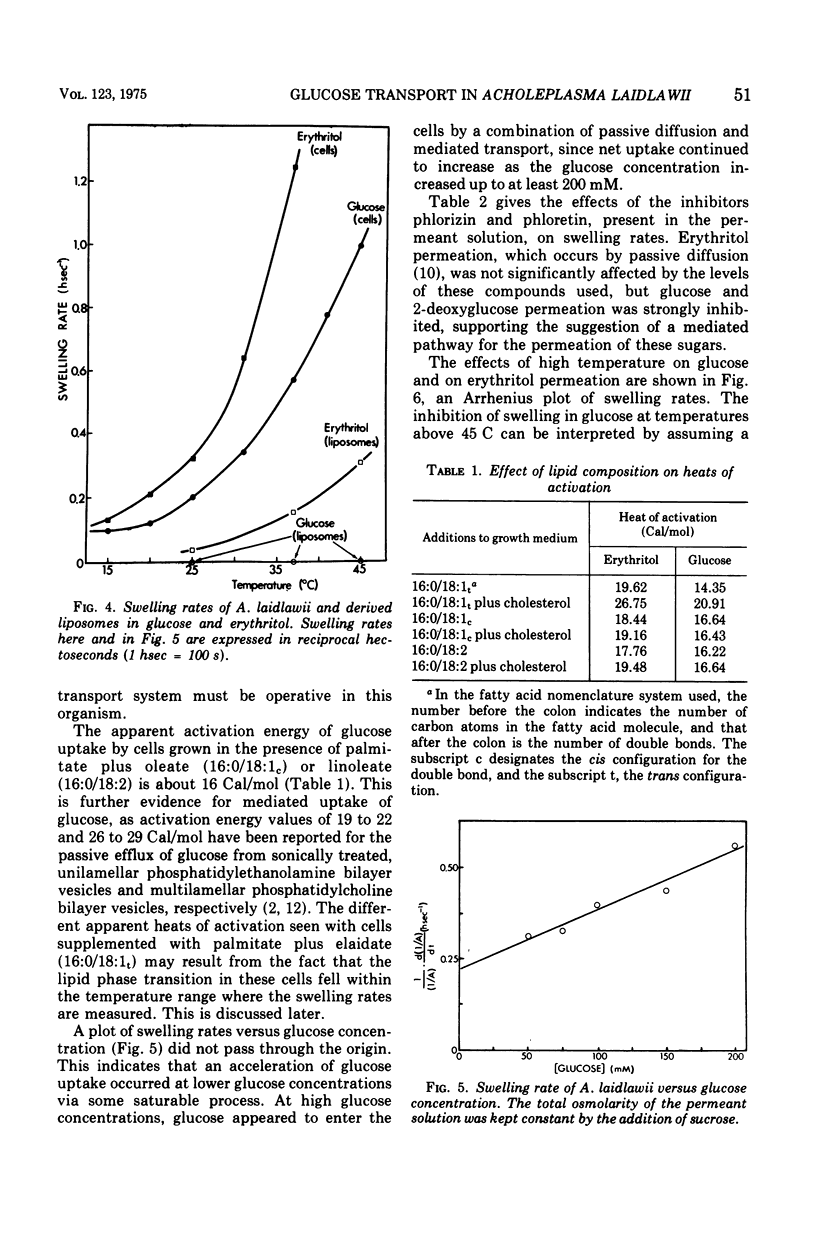
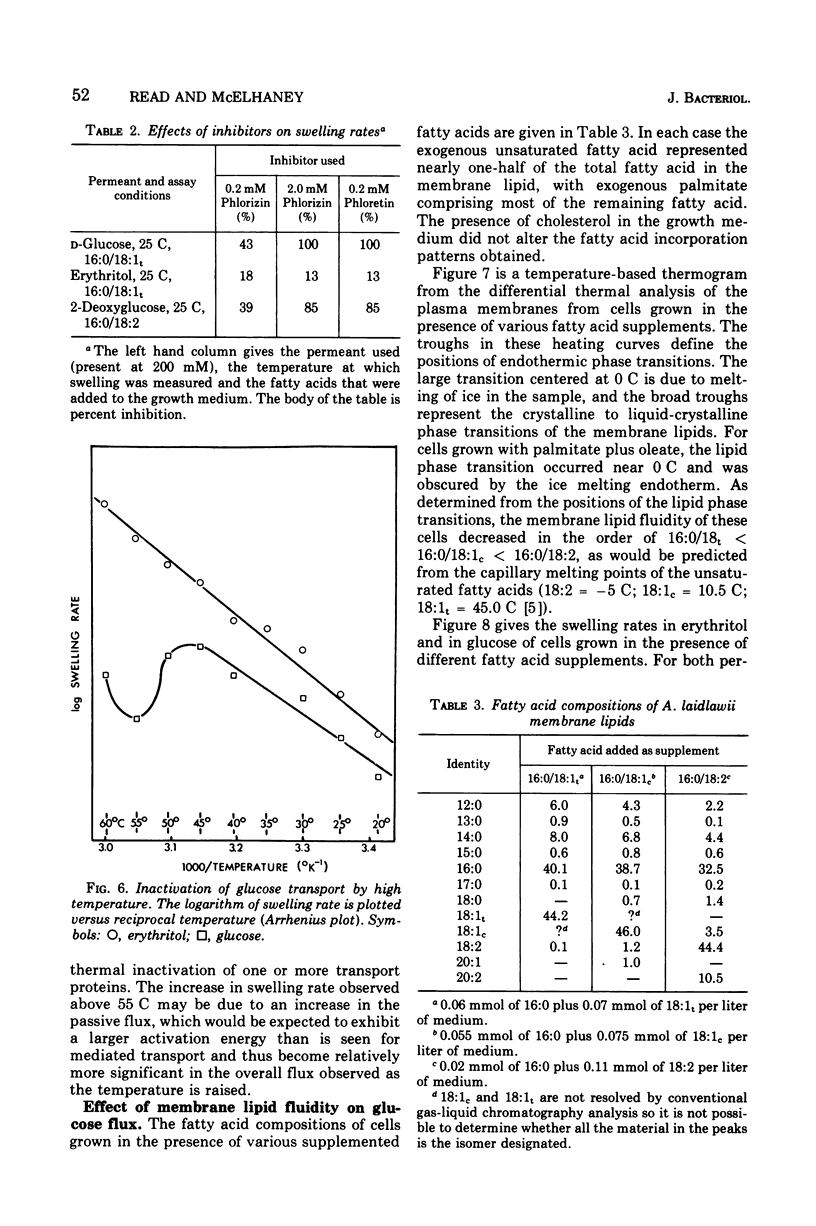
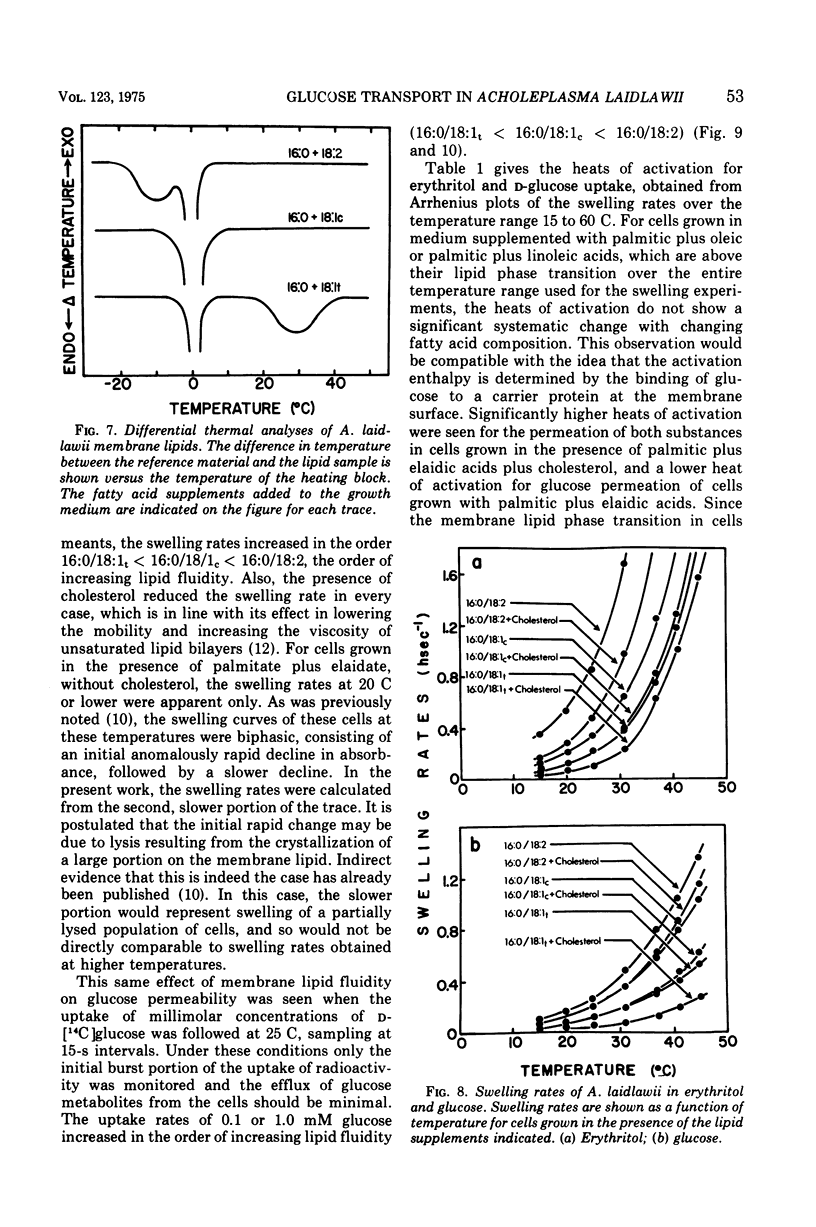
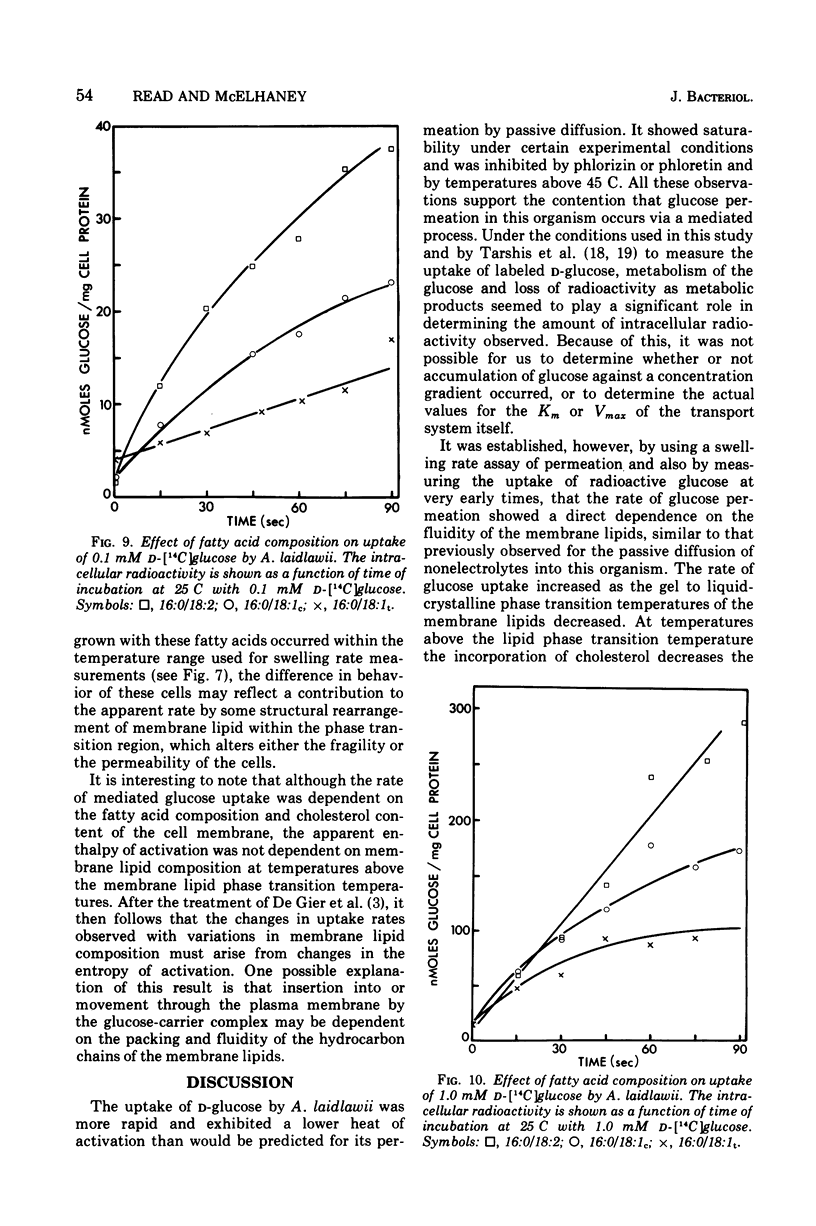
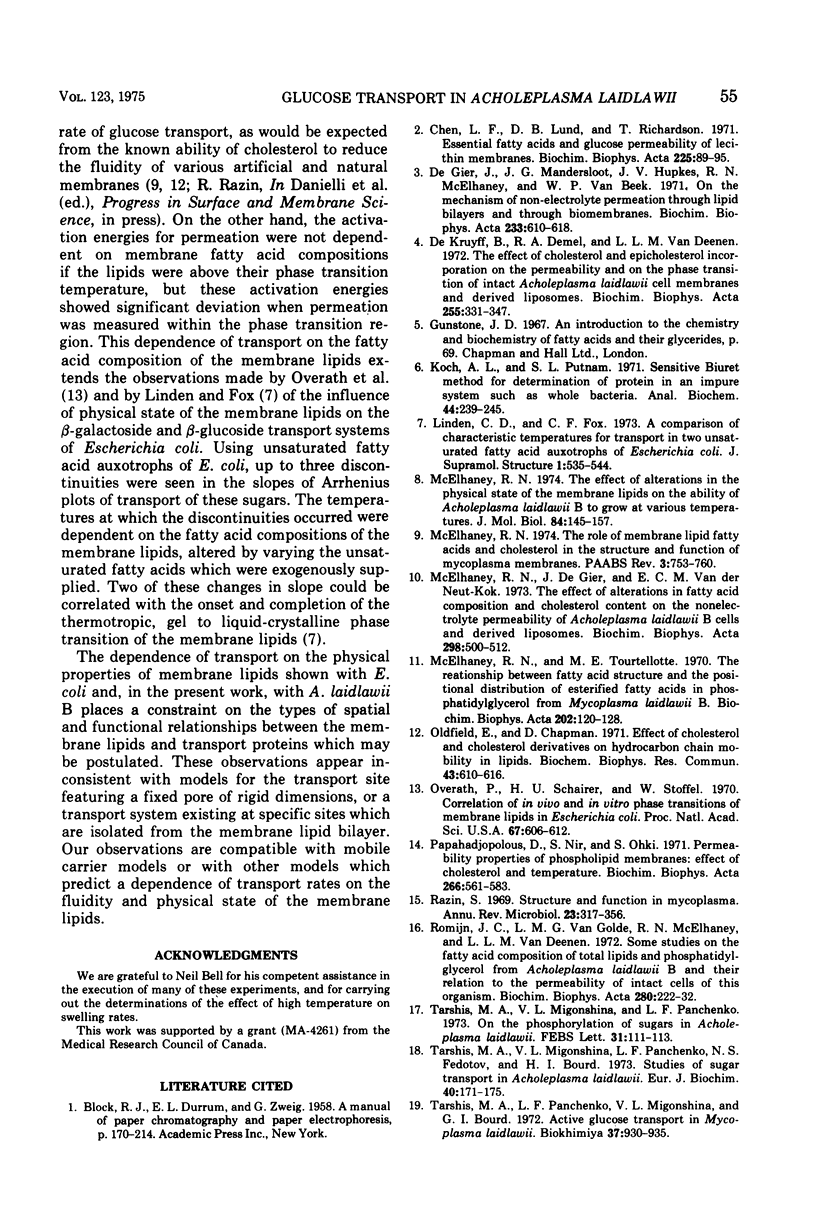
Selected References
These references are in PubMed. This may not be the complete list of references from this article.
- Chen L. F., Lund D. B., Richardson T. Essential fatty acids and glucose permeability of lecithin membranes. Biochim Biophys Acta. 1971 Jan 5;225(1):89–95. doi: 10.1016/0005-2736(71)90287-2. [DOI] [PubMed] [Google Scholar]
- De Gier J., Mandersloot J. G., Hupkes J. V., McElhaney R. N., Van Beek W. P. On the mechanism of non-electrolyte permeation through lipid bilayers and through biomembranes. Biochim Biophys Acta. 1971 Jun 1;233(3):610–618. doi: 10.1016/0005-2736(71)90160-x. [DOI] [PubMed] [Google Scholar]
- Koch A. L., Putnam S. L. Sensitive biuret method for determination of protein in an impure system such as whole bacteria. Anal Biochem. 1971 Nov;44(1):239–245. doi: 10.1016/0003-2697(71)90366-6. [DOI] [PubMed] [Google Scholar]
- Linden C. D., Fox C. F. A comparison of characteristic temperatures for transport in two unsaturated fatty acid auxotrophs of Escherichia coli. J Supramol Struct. 1973;1(6):535–544. doi: 10.1002/jss.400010608. [DOI] [PubMed] [Google Scholar]
- McElhaney R. N. The effect of alterations in the physical state of the membrane lipids on the ability of Acholeplasma laidlawii B to grow at various temperatures. J Mol Biol. 1974 Mar 25;84(1):145–157. doi: 10.1016/0022-2836(74)90218-6. [DOI] [PubMed] [Google Scholar]
- McElhaney R. N., Tourtellotte M. E. The relationship between fatty acid structure and the positional distribution of esterified fatty acids in phosphatidyl glycerol from Mycoplasma laidlawii B. Biochim Biophys Acta. 1970 Feb 10;202(1):120–128. doi: 10.1016/0005-2760(70)90223-7. [DOI] [PubMed] [Google Scholar]
- Mcelhaney R. N., de Gier J., van der Neut-Kok E. C. The effect of alterations in fatty acid composition and cholesterol content on the nonelectrolyte permeability of Acholeplasma laidlawii B cells and derived liposomes. Biochim Biophys Acta. 1973 Mar 16;298(2):500–512. doi: 10.1016/0005-2736(73)90376-3. [DOI] [PubMed] [Google Scholar]
- Oldfield E., Chapman D. Effects of cholesterol and cholesterol derivatives on hydrocarbon chain mobility in lipids. Biochem Biophys Res Commun. 1971 May 7;43(3):610–616. doi: 10.1016/0006-291x(71)90658-9. [DOI] [PubMed] [Google Scholar]
- Overath P., Schairer H. U., Stoffel W. Correlation of in vivo and in vitro phase transitions of membrane lipids in Escherichia coli. Proc Natl Acad Sci U S A. 1970 Oct;67(2):606–612. doi: 10.1073/pnas.67.2.606. [DOI] [PMC free article] [PubMed] [Google Scholar]
- Papahadjopoulos D., Nir S., Oki S. Permeability properties of phospholipid membranes: effect of cholesterol and temperature. Biochim Biophys Acta. 1972 Jun 20;266(3):561–583. doi: 10.1016/0006-3002(72)90001-7. [DOI] [PubMed] [Google Scholar]
- Razin S. Structure and function in mycoplasma. Annu Rev Microbiol. 1969;23:317–356. doi: 10.1146/annurev.mi.23.100169.001533. [DOI] [PubMed] [Google Scholar]
- Romijn J. C., van Golde L. M., McElhaney R. N., van Deenen L. L. Some studies on the fatty acid composition of total lipids and phosphatidylglycerol from Acholeplasma laidlawii B and their relation to the premeability of intact cells of this organism. Biochim Biophys Acta. 1972 Sep 7;280(1):22–32. doi: 10.1016/0005-2760(72)90209-3. [DOI] [PubMed] [Google Scholar]
- Tarshis M. A., Migoushina V. L., Panchenko L. F., Fedotov N. S., Bourd H. I. Studies of sugar transport in Acholeplasma laidlawii. Eur J Biochem. 1973 Dec 3;40(1):171–175. doi: 10.1111/j.1432-1033.1973.tb03182.x. [DOI] [PubMed] [Google Scholar]
- Tarshis M. A., Migoushina V. L., Panchenko L. F. On the phosphorylation of sugars in Acholeplasma laidlawii. FEBS Lett. 1973 Apr 1;31(1):111–113. doi: 10.1016/0014-5793(73)80085-7. [DOI] [PubMed] [Google Scholar]
- Tarshis M. A., Panchenko L. F., Migushina V. L., Fedotov N. S., Burd G. I. Ob aktivnom transporte gliukozy v kletkakh Mycoplasma laidlawii. Biokhimiia. 1972 Sep-Oct;37(5):930–935. [PubMed] [Google Scholar]
- de Kruyff B., Demel R. A., van Deenen L. L. The effect of cholesterol and epicholesterol incorporation on the permeability and on the phase transition of intact Acholeplasma laidlawii cell membranes and derived liposomes. Biochim Biophys Acta. 1972 Jan 17;255(1):331–347. doi: 10.1016/0005-2736(72)90032-6. [DOI] [PubMed] [Google Scholar]


